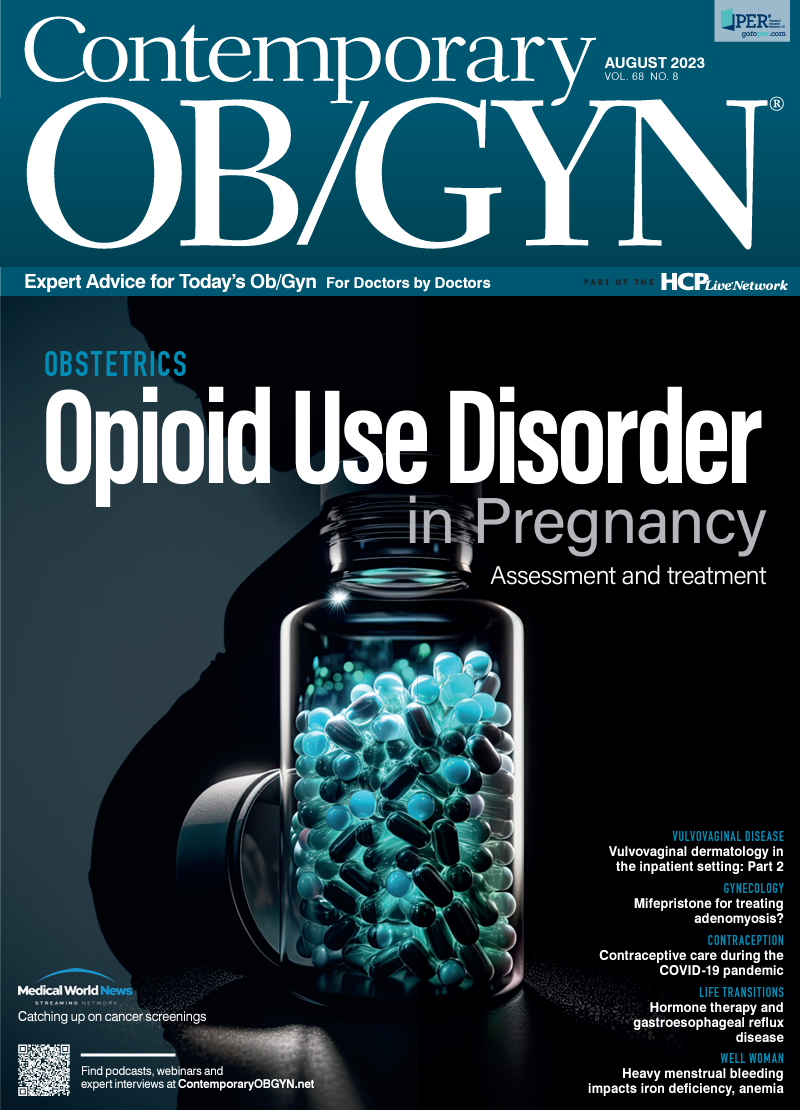Mifepristone for treating adenomyosis
In a recent study, positive safety and efficacy were found in patients taking mifepristone against adenomyosis.
Mifepristone for treating adenomyosis | Image Credit: © Drazen - © Drazen - stock.adobe.com.

According to a recent study published in JAMA Network Open, mifepristone is safe and effective as treatment against adenomyosis.
Adenomyosis, also called internal endometriosis, is defined as, “the presence of ectopic endometrial glands and stroma in the myometrium.” About 20% of individuals of reproductive age with a uterus have been diagnosed with adenomyosis, which has an estimated prevalence of 5% to 70%.
Adenomyosis is associated with severe health issues including secondary anemia,menorrhagia, progressive dysmenorrhea, miscarriage, enlarged uterus, subfertility, and obstetric problems. Medical treatment is vital to management but approved medical guidelines for treatment currently do not exist.
Current medical treatments have shown little efficacy, and hysterectomy is chosen for treatment by 82% of patients with adenomyosis. However, this option leads to infertility.
Mifepristone has been considered as a method of treatment against adenomyosis, but there is still debate on whether this method is more effective than traditional therapy. To determine the safety and efficacy of mifepristone against adenomyosis, investigators conducted a double-blind, multicenter, placebo-controlled, randomized clinical trial.
Clinicians enrolled patients in the trial from May 19, 2018, to April 4, 2019, with the trial taking placing across 10 hospitals in China. Data was maintained by investigators using Electronic Data Capture System.
Participants included premenopausal female individuals aged 18 to 50 years diagnosed with adenomyosis. Diagnosis was confirmed by ultrasonography or magnetic resonance imaging specialists. Exclusion criteria included severe anemia, uterine fibroids, endometriosis, endometrial malignant tumors, and a history of undiagnosed vaginal bleeding.
Participants were randomized 1:1 into either a mifepristone 10 mg group or an oral placebo group. Treatment lasted for 12 weeks, with trial visits occurring every 4 weeks, including one which occurred 4 weeks after treatment. Data on safety, efficacy, and adverse events were recorded.
The change in dysmenorrhea intensity associated with adenomyosis was measured as the primary efficacy end point, using a visual analog scale (VAS) ranging from 0 to 10, with higher scores indicating increased severity. The total efficacy rate was also measured, defined as, “the proportion of patients with VAS scores reduced by at least 30% from baseline to treatment completion.”
The change in menstrual blood loss was measured as a secondary end point, measured using the Pictorial Blood Loss Assessment Chart (PBAC). A PBAC score of 100 indicated over 80 mL of blood loss, considered to be heavy menstrual bleeding.
Safety evaluations were also performed to record adverse event incidence and severity. Evaluations included vital signs, laboratory evaluations, endometrial biopsies, physical and gynecological examinations, and concerns after drug treatment.
There were 134 patients in the final analysis, 66 in the mifepristone group and 68 in the placebo group. The full-analysis set (FAS) population included patients with valid data at baseline, comprised of 61 patients in the mifepristone group and 65 in the placebo group. These patients were used for efficacy evaluation.
At baseline, FAS patients had an average VAS score of 6.7. The mifepristone group saw an average change in VAS score of -6.63 from baseline to 12 weeks of treatment, compared to a change of -0.95 in the placebo group.
Significant decreases in VAS score were observed after 4 weeks of mifepristone treatment. Total efficacy for dysmenorrhea was seen in 91.8% of the mifepristone group vs 23.1% of the placebo group, while complete remission was seen in 88.5% and 6.2% respectively.
Secondary outcomes were also improved in the mifepristone group compared to the placebo group, with significant reductions in PBAC, along with increased rates of complete remission for heavy menstrual bleeding, observed. Adverse events were reported in 30.51% of the mifepristone group and 21.88% of the placebo group, none of which were severe.
Overall, mifepristone displayed positive safety and efficacy data for treating adenomyosis. Investigators recommended further research to determine long-term safety and efficacy.
Reference
Che X, Wang J, Sun W, et al. Effect of mifepristone vs placebo for treatment of adenomyosis with pain symptoms: arandomized clinical trial. JAMA Netw Open. 2023;6(6):e2317860. doi:10.1001/jamanetworkopen.2023.17860

S4E1: New RNA platform can predict pregnancy complications
February 11th 2022In this episode of Pap Talk, Contemporary OB/GYN® sat down with Maneesh Jain, CEO of Mirvie, and Michal Elovitz, MD, chief medical advisor at Mirvie, a new RNA platform that is able to predict pregnancy complications by revealing the biology of each pregnancy. They discussed recently published data regarding the platform's ability to predict preeclampsia and preterm birth.
Listen
